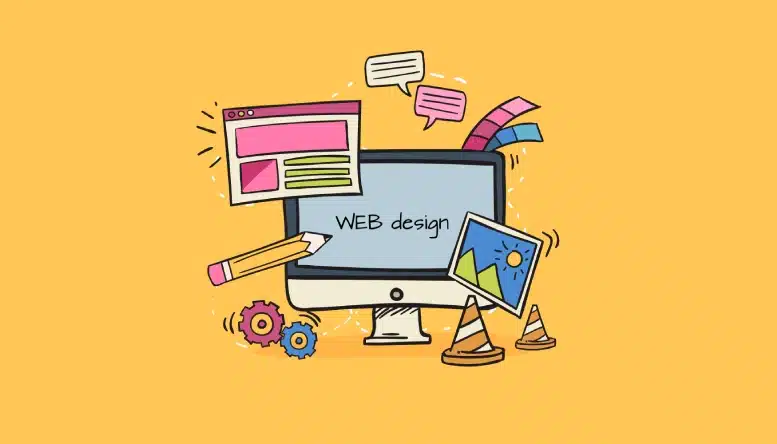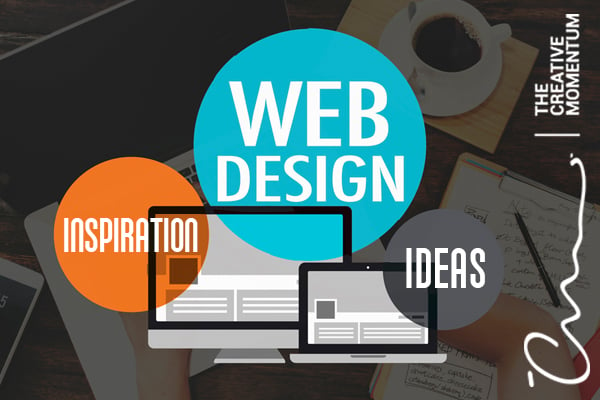Web Design London Ontario Packages Designed to Your Company
Web Design London Ontario Packages Designed to Your Company
Blog Article
How to Properly Incorporate Looks and Performance in Website Design
When developing an internet site, you require to strike a balance between aesthetics and performance. It's not just concerning looking great; your layout needs to also offer an objective and guide individuals effectively. By concentrating on simplicity and instinctive navigation, you can create an appealing experience. But what components truly enhance use while maintaining aesthetic appeal? Let's check out the vital concepts that can bring about an unified blend of beauty and function.
Recognizing the Significance of Aesthetic Appeals and Capability
When you make an internet site, comprehending the balance in between appearances and functionality is vital for producing an efficient user experience. A visually enticing website grabs interest, however it's the functionality that keeps customers involved. Site visitors will swiftly lose rate of interest and leave.Consider your target audience and what attracts them in if your website looks great yet is tough to browse. You intend to create a layout that reflects your brand name while ensuring convenience of usage. Structured layouts, user-friendly navigation, and clear calls to activity can enhance both aesthetic appeals and performance.

Concepts of Reliable Website Design
To produce an efficient website design, you need to follow several key principles that enhance both user experience and aesthetic charm. Initially, prioritize simplicity; a tidy design aids users navigate conveniently. Make use of a constant color pattern and typography to maintain comprehensibility throughout your website. This promotes knowledge and trust.Next, guarantee your design is responsive. Customers access websites on different tools, so your design needs to adjust perfectly. Take notice of visual pecking order; emphasize important elements with positioning, shade, or dimension to guide users' focus.Finally, incorporate ample white space. It protects against mess and makes material a lot more digestible. Bear in mind, reliable website design balances aesthetics and functionality, so every style choice must offer a function. By following these concepts, you'll create a site that's not just aesthetically enticing yet likewise easy to use, ultimately maintaining visitors engaged and encouraging them to return.
Prioritizing User Experience
When prioritizing customer experience, you'll desire to start by recognizing what your individuals absolutely require. Simplifying navigating design can make a big distinction in how easily they locate what they're searching for. Additionally, enhancing aesthetic power structure assists guide their interest to the most vital elements on your site.
Comprehending User Demands
Recognizing user requirements is vital for creating an appealing internet experience that keeps visitors coming back. To attain this, you need to identify the goals and choices of your target market. Beginning by carrying out customer research, like surveys or interviews, to gather insights on what users value most. When engaging with comparable sites, pay interest to their discomfort factors and challenges. This details allows you to customize your style, ensuring performance aligns with customer assumptions. Furthermore, think about creating user personalities that stand for various sections of your target market, assisting you envision their requirements during the layout process. When you prioritize comprehending customer demands, you create a web site that not just looks wonderful but likewise delivers a seamless, enjoyable experience that cultivates commitment.
Streamlining Navigation Design

Enhancing Aesthetic Pecking Order
A strong aesthetic power structure is essential in leading individuals with your site and ensuring they engage with crucial web content. To accomplish this, utilize dimension, shade, and spacing tactically. Make vital aspects like headings larger and bolder than body message, drawing interest promptly. Make use of contrasting colors to highlight contact us to action, encouraging clicks. Additionally, employ enough white area to separate sections, making content absorbable and inviting.Consider the circulation of details; prepare elements practically, leading users' eyes from one point to the next. Usage aesthetic hints, like arrowheads or lines, to direct attention. By prioritizing visual pecking order, you improve individual experience and raise the chance of conversions, guaranteeing your site is both cosmetically pleasing and functionally reliable.
Color Theory and Its Effect On Usability
While selecting the right shades for your internet site may feel like a minor information, it substantially affects use and individual experience. Shade affects just how users perceive info and can enhance or hinder navigating. For instance, contrasting colors can help crucial components attract attention, making it less complicated for site visitors to locate what they need.Additionally, consider the psychology of shades: blue commonly influences depend on, while red produces necessity. Understanding your target market can lead your shade selections, assuring they resonate well.Moreover, consistent color design help construct brand name identification, making your website more remarkable. Be get more info careful-- also numerous colors can overwhelm customers. Stick to a minimal palette that enhances your content and maintains clarity.Incorporating access is additionally vital; confirm your shade mixes get along for those with visual disabilities. By thoughtfully using color theory, you'll improve usability and develop an extra interesting user experience.
Typography: Balancing Design and Readability
Color selections set the phase for your website, yet typography plays a similarly essential role in improving individual experience. You want your message to connect plainly while additionally showing your brand's individuality. Begin by selecting fonts that are not just attractive but also readable. Sans-serif typefaces typically work well for electronic screens, as they're much easier to check out at numerous sizes.Maintain a hierarchy by utilizing various typeface sizes and weights; this overviews individuals through your content effortlessly. Take into consideration line spacing and letter spacing; as well tight can annoy viewers, while also loosened can interfere with the circulation. Limit your font options to 2 or 3 to maintain the design cohesive.Finally, always test your typography throughout different gadgets and web browsers. What looks great on one display may out another. Stabilizing design with readability assurances that your message reverberates, maintaining your target market educated and engaged.
Receptive Layout: Making Aesthetic Appeals Deal With All Tools
To guarantee your website looks great on any device, you'll require to welcome receptive layout principles. This method assurances your site adapts to different screen dimensions, providing an excellent user experience. Begin by utilizing fluid grids and adaptable photos that scale perfectly. Instead of fixed dimensions, choose percents and loved one systems, allowing your format to readjust dynamically.Next, carry out media inquiries in your CSS. These let you apply different styles based upon device characteristics, like screen width. In this manner, you can preserve aesthetic appeal while ensuring functionality.Don' t ignore touch targets; make sure switches and links are easy to touch on smaller sized screens. Focus on necessary content, so customers can quickly navigate your site no matter their gadget. By concentrating on these elements, you'll develop an appealing, aesthetically appealing experience that fulfills the demands of all customers, whether they're on a tablet, desktop computer, or mobile phone .
Carrying Out Functionality Screening for Continuous Enhancement
To improve your website design, you need to establish clear usability goals that line up with individual needs. By performing user examinations, you can collect valuable responses on exactly how actual people interact with your website. Examining these outcomes will help you make notified improvements and produce an extra efficient individual experience.
Defining Use Goals
While aesthetics can draw individuals in, defining functionality objectives is vital for guaranteeing their experience stays enjoyable and smooth. Begin by recognizing what you want customers to achieve on your site (website design london Ontario). Consider their needs, behaviors, and jobs. Are they seeking info, purchasing, or authorizing up for an e-newsletter? Develop clear criteria to measure success, like task completion prices or time on job. Focus on intuitive navigation, accessible material, and responsive design to boost usability. Routinely revisit these goals as individual expectations advance. By specifying use objectives, you create a structure for evaluating and enhancing your website's efficiency. This emphasis on functionality not only boosts individual fulfillment yet also strengthens the overall efficiency of your layout
Performing Customer Examinations
Performing individual tests is important for improving your website and guaranteeing it satisfies your target market's requirements. Begin by identifying your target customers and developing an examination plan that details your objectives. Make use of a mix of qualitative and quantitative methods, such as surveys, meetings, and task-based monitorings, to collect comprehensive comments. Invite individuals to navigate your site while you observe their interactions and note any kind of difficulties they come across. Encourage open dialogue to record their ideas and sensations about the layout and capability. Maintain sessions brief and concentrated, ensuring you cover crucial locations without frustrating customers. Ultimately, make sure to document all searchings for, as this info will certainly be indispensable for making informed design decisions that boost both aesthetics and functionality.
Analyzing Examination Outcomes
Just how can you efficiently evaluate the outcomes of your usability examinations to drive continual enhancement? Begin by categorizing comments right into typical styles. Look for patterns in individual actions that highlight discomfort points or locations for improvement. Usage measurable information, like task conclusion rates and time on job, to measure usability fairly. Don't forget to take into consideration qualitative understandings from customer remarks; they typically reveal underlying issues that numbers can't reveal. Focus on the most impactful searchings for and create actionable products for your layout group. Bear in mind, it has to do with repeating-- implement modifications, then test again. This cycle of testing, assessing, and refining assists you equilibrium appearances and functionality, guaranteeing your web site satisfies user demands successfully while keeping aesthetic charm.
Regularly Asked Inquiries
How Do I Choose the Right Shade Combination for My Site?
To choose the right shade scheme for your internet site, consider your brand's individuality, target audience, and psychological effect (website design london Ontario). Use shade psychology, create consistency, and guarantee readability. Examination combinations to see what resonates ideal with visitors
What Devices Can Help With Website Design Aesthetic Appeals and Capability?
You can use tools like Adobe XD, Figma, and Lay out to enhance your website design's appearances and capability. These systems offer instinctive user interfaces, collaboration functions, and pre-made themes to simplify your imaginative procedure and boost your styles.
How Can I Integrate Animations Without Jeopardizing Capability?
To incorporate animations without jeopardizing functionality, prioritize subtle effects that improve individual experience. Usage CSS animations for smoother communications, assurance quick tons times, and test on different gadgets to keep performance while adding visual appeal.
What Are Usual Mistakes to Stay Clear Of in Website Design Appearances?
When creating, prevent chaotic designs, bad color options, and irregular fonts. Don't neglect mobile responsiveness, as it can alienate individuals. Confirm your layout aligns with your brand, creating a smooth experience that involves site visitors successfully.
Just how Frequently Should I Update My Internet site's Design for Optimal Visual Appeals?
You ought to update your website's layout every 1-2 years to stay up to date with trends and keep ideal aesthetic appeals. Frequently renewing visuals aids involve visitors and warranties your website continues to be easy to use and enticing. When you create an internet site, recognizing the balance in between aesthetic appeals and capability is essential for producing an efficient individual experience. To develop an efficient web style, you require to adhere to numerous vital concepts that boost both individual experience and visual appeal. Individuals access websites on numerous gadgets, so your design needs to adapt seamlessly. When focusing on individual experience, you'll want to begin by recognizing what your customers truly need. Begin by performing user study, like interviews or surveys, to gather insights on what individuals value most.
Report this page